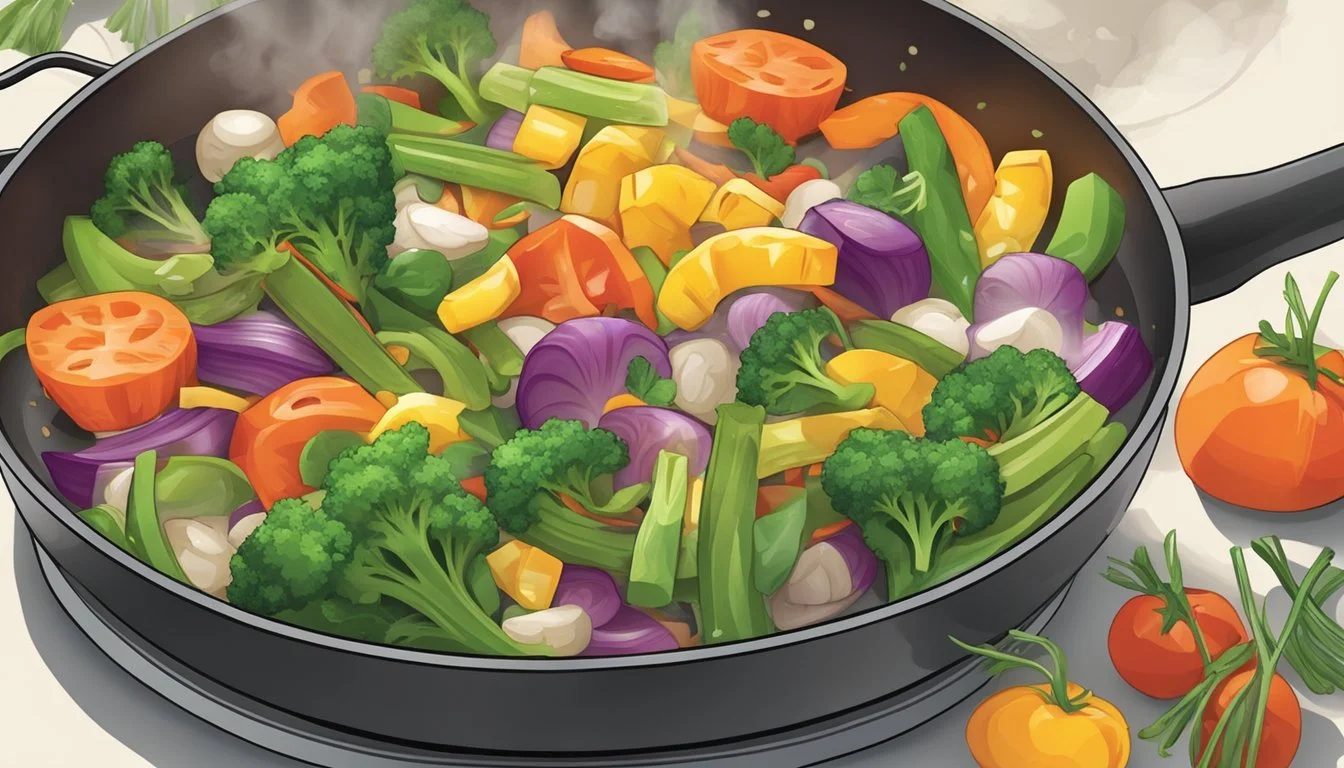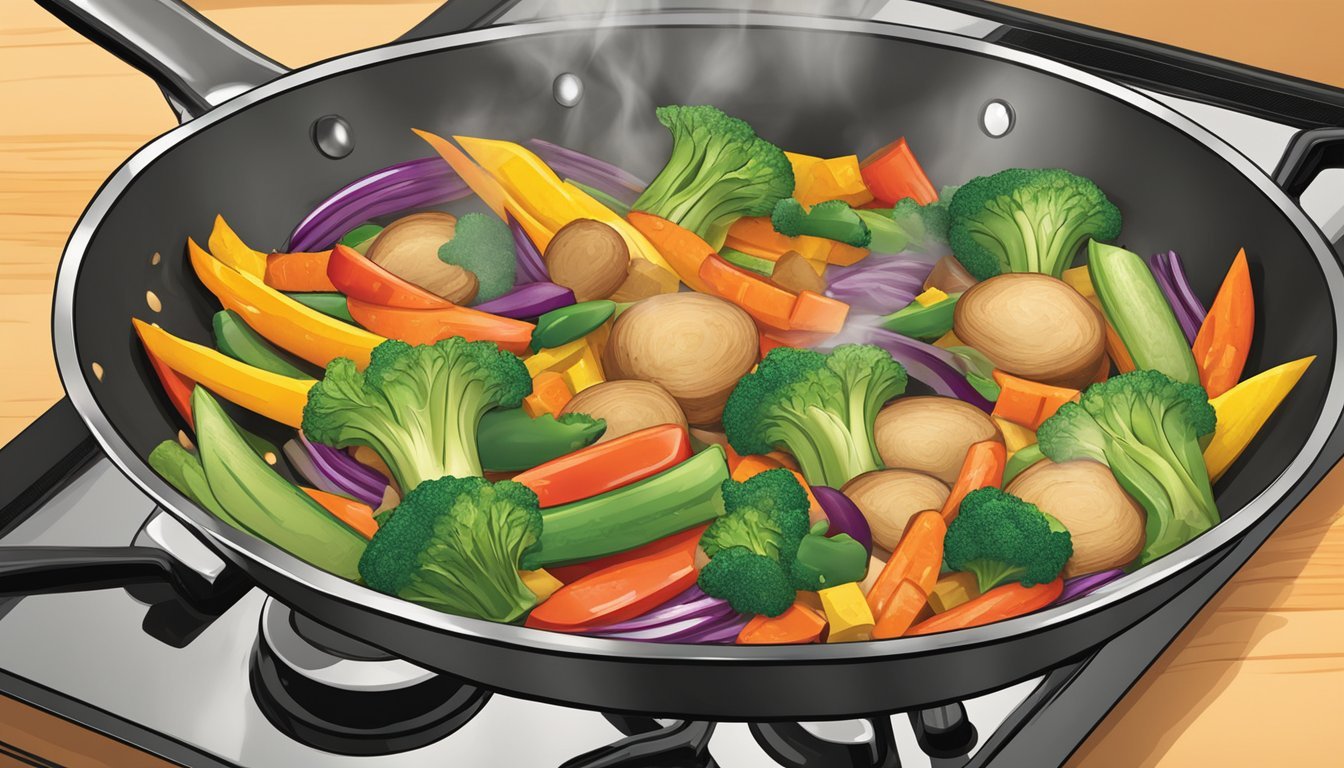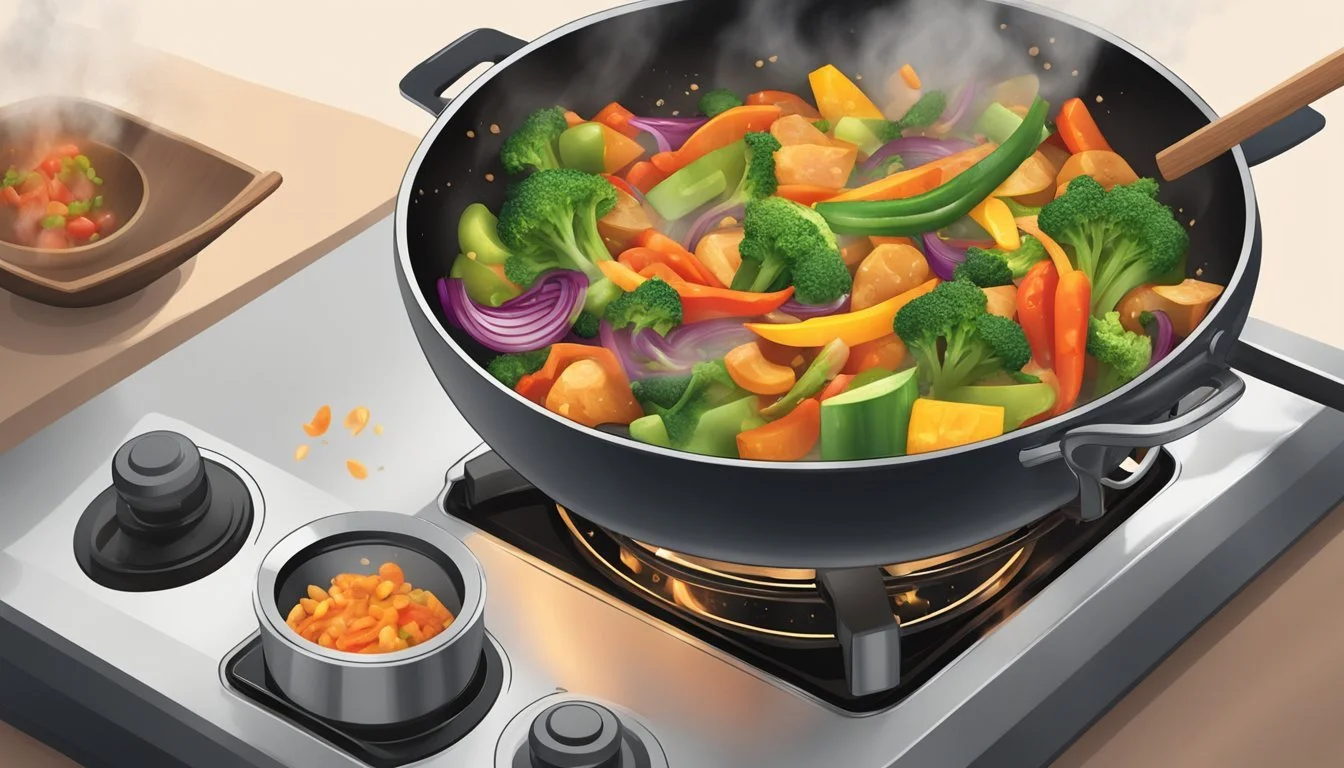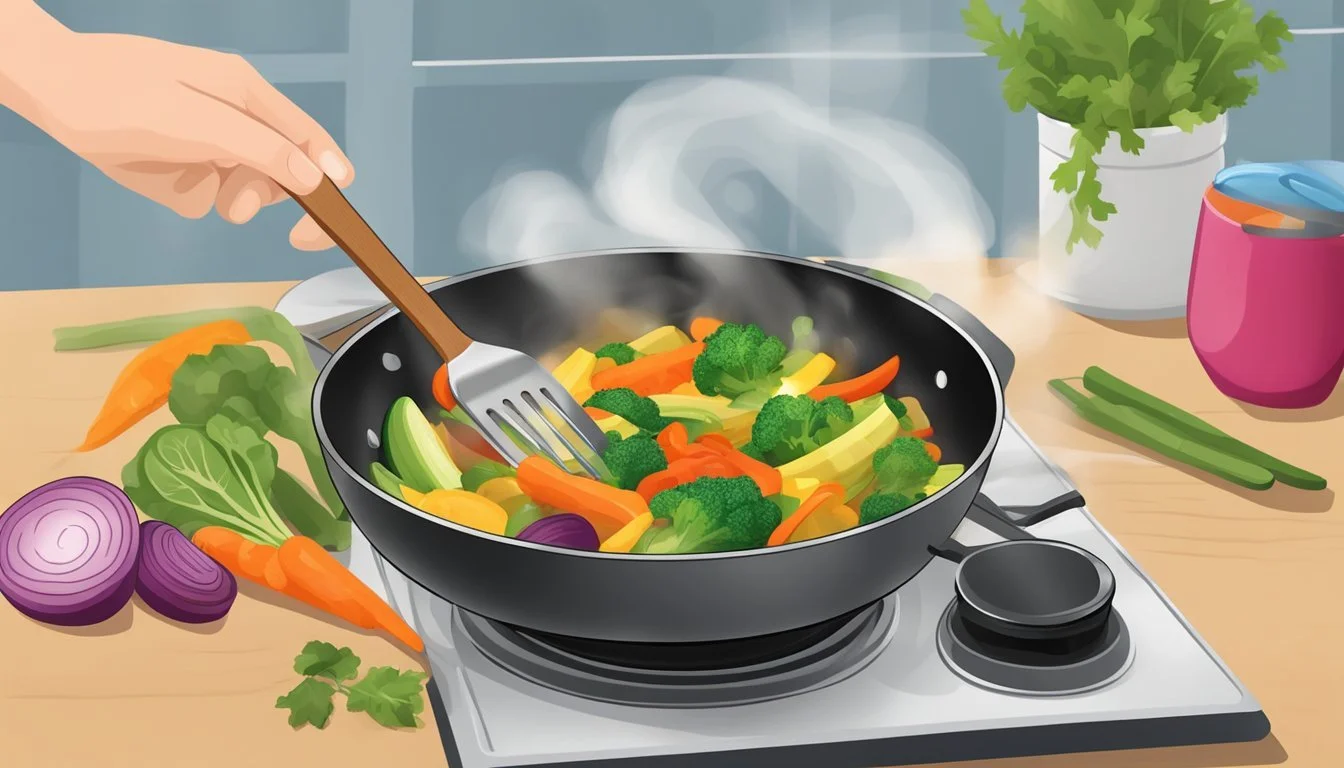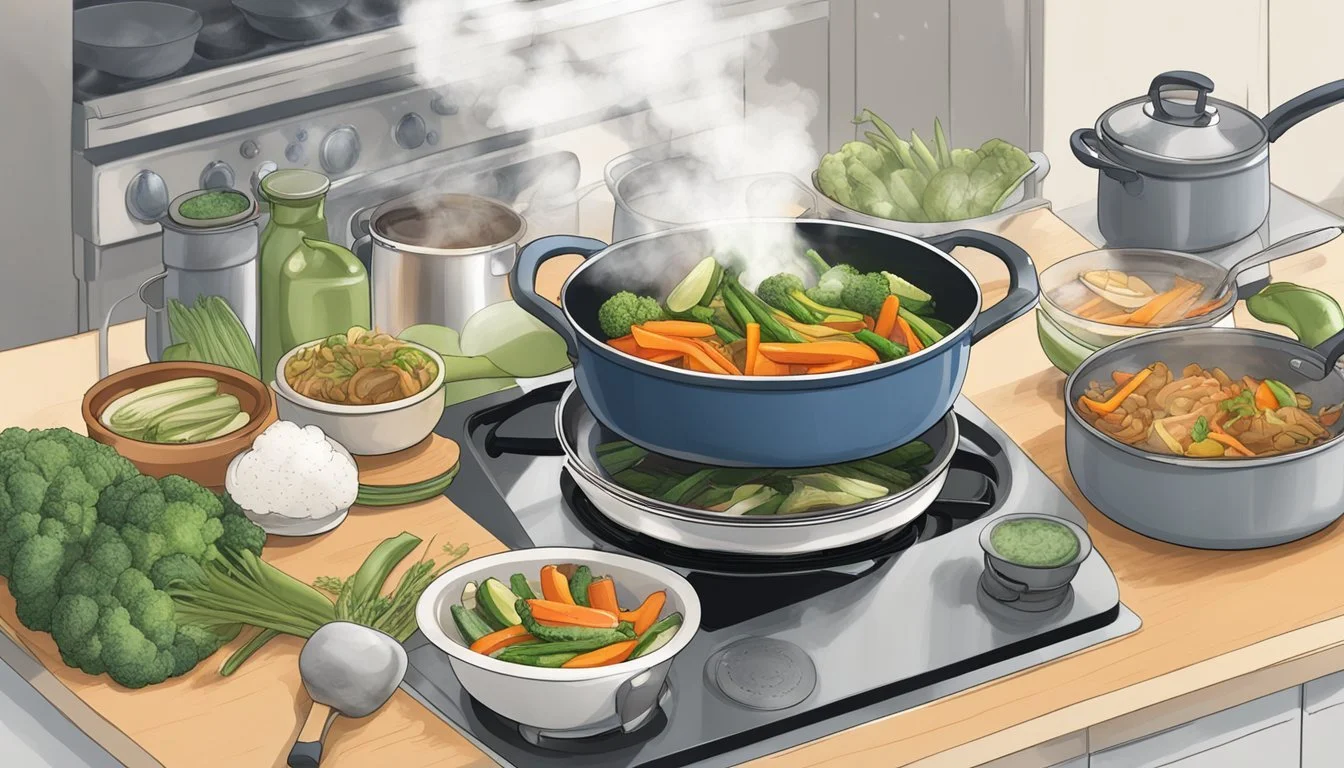How to Reheat Gluten-Free Stir-Fry Vegetables for Perfect Flavor
Reheating gluten-free stir-fry vegetables can be a bit of a challenge if you want to maintain their freshness and flavor. Whether you've prepared your stir-fry with a blend of broccoli, snow peas, and bell peppers or added unique seasonings, maintaining the dish's texture and taste upon reheating is crucial. The optimal way to reheat stir-fry vegetables is by using an air fryer to keep the vegetables crispy and delicious, although other methods like microwave and stove-top can also yield great results if done correctly.
Understanding the basic principles of reheating is essential here. Overheating can lead to soggy vegetables and a loss of flavors, while underheating may not warm the dish thoroughly. Different reheating methods like microwaving in a microwave-safe dish, covering with a paper towel, or using a medium-power setting ensure the vegetables heat evenly without becoming mushy or dry.
For those concerned with gluten-free diets, the choice of reheating methods is particularly important to preserve not only the texture but also the nutritional integrity of the ingredients. Proper reheating helps retain the vibrant colors and crispness of the vegetables, ensuring your gluten-free stir-fry vegetables taste as good as new each time you enjoy them.
Understanding Gluten-Free Stir-Fry
Gluten-free stir-fries rely on fresh vegetables, gluten-free sauces, and sometimes proteins to create a delicious and allergen-friendly meal. This section details the essential ingredients and gluten-free components to consider.
Ingredients Overview
A gluten-free stir-fry typically includes a variety of colorful vegetables such as bell peppers, broccoli, snap peas, and carrots. These vegetables not only add flavor but also provide essential nutrients.
Protein options can range from chicken, shrimp, and tofu to beef. When preparing a gluten-free recipe, it's important to ensure that proteins are marinated and cooked using gluten-free ingredients to avoid cross-contamination.
The stir fry sauce is equally vital. Commonly used sauces include a mix of soy sauce alternatives like tamari, garlic, ginger, and sometimes rice vinegar or honey for sweetness. Tamari serves as an excellent gluten-free substitution for traditional soy sauce.
Gluten-Free Components
Tamari is a wheat-free option that replicates the umami flavor of soy sauce while being safe for those avoiding gluten. It binds the flavors together without compromising dietary restrictions.
Cornstarch or arrowroot powder often acts as a gluten-free thickening agent, giving the stir fry sauce a glossy and thick consistency.
Rice vinegar and gluten-free broth are additional liquid components used to enhance flavor without adding gluten.
For added texture and taste, sesame oil can be drizzled over the stir fry just before serving, providing a nutty aroma.
When choosing additional flavorings like ginger, garlic, and scallions, it's crucial to check product labels and ensure they are free from hidden gluten sources.
Ensuring all ingredients are certified gluten-free helps maintain the integrity and safety of the dish, making it enjoyable for everyone.
Preparation Before Reheating
Proper preparation before reheating gluten-free stir-fry vegetables ensures optimal taste and texture. Follow these tips to store and preheat your leftovers effectively.
Storage Tips
Refrigerate leftovers promptly to maintain freshness and quality. Place them in airtight containers to prevent moisture loss and contamination. Clear containers help keep track of the contents and expiration dates.
Labeling: Clearly label each container with the date it was cooked. This aids in tracking freshness and helps avoid consuming spoiled food.
Avoiding Cross-Contamination: Store gluten-free items separately from gluten-containing foods in the refrigerator. This prevents accidental contamination and keeps your meal safe for those with gluten sensitivities.
Pre-Reheating Procedures
Thaw Properly: If you stored leftovers in the freezer, thaw them in the refrigerator overnight. This allows even reheating and preserves the texture of the vegetables.
Check Ingredients: Before reheating, inspect the vegetables for any spoilage signs such as off smells or unusual textures.
Adding Moisture: Reintroduce a small amount of water or gluten-free broth to the stir-fry. This helps rehydrate the vegetables and keeps them tender when reheated.
Selecting the Right Method: Choose a reheating method that retains the freshness and taste, such as using the stovetop or microwave with a damp paper towel cover to maintain moisture.
Reheating Techniques
When it comes to reheating gluten-free stir-fry vegetables, there are three effective methods that can help retain the original flavors and textures: using a skillet or wok, the microwave method, and an oven-baked approach.
Using a Skillet or Wok
To reheat gluten-free stir-fry vegetables on a stove, a skillet or wok is optimal.
Heat a teaspoon of olive oil in a skillet or wok over medium-high heat.
Once the oil is hot, add the leftovers. Stir frequently to distribute the heat evenly.
Cook for about 5-7 minutes, ensuring that the vegetables are heated through but not overcooked.
Using a wok allows for quick, even heating. Stirring frequently helps prevent sticking and ensures that all components warm up uniformly.
Microwave Method
Reheating stir-fry vegetables in the microwave is quick and convenient.
Place the stir-fry in a microwave-safe dish or bowl. Avoid overfilling the container.
Cover the dish with a paper towel to trap steam and maintain moisture.
Set the microwave to medium power and reheat for 90 seconds.
After the initial heating, stir the vegetables and check for doneness. If needed, reheat in 30-second intervals until evenly heated.
Oven-Baked Approach
The oven method is effective for reheating larger batches of gluten-free stir-fry vegetables without compromising texture.
Preheat the oven to 375°F.
Transfer the stir-fry to an oven-safe dish or baking sheet. Cover with foil to retain moisture and prevent drying out.
Heat for 10-15 minutes, stirring halfway through to ensure even heating.
This method helps maintain a balance of heat distribution, making sure the vegetables are thoroughly reheated without losing their crispness.
Ensuring Optimal Flavor and Texture
Properly reheating gluten-free stir-fry vegetables involves managing heat and restoring moisture to retain the dish’s flavor and texture. Using the right techniques ensures that vegetables remain crisp and the flavors are well-preserved.
Managing Heat
The key to reheating stir-fry while maintaining optimal texture is to apply moderate heat. Using a skillet over medium heat is recommended.
Oil Choices:
Olive oil and avocado oil are excellent due to their high smoke points, which help prevent the vegetables from becoming soggy.
For an air fryer, set it to 350 degrees Fahrenheit. Create a makeshift bowl with aluminum foil, and air fry for five minutes, stirring halfway through. This helps keep the vegetables crispy.
Restoring Moisture
Restoring moisture is critical to avoid dryness. When reheating in a microwave, cover the dish with a damp paper towel. This traps steam, keeping the stir-fry moist.
For stovetop reheating, a small amount of water or broth can be added to the skillet. This not only adds moisture but also enhances flavor.
Another trick is to mix in a little oil, such as olive oil, during reheating, which helps maintain a fresh taste and appropriate moisture level.
Serving Suggestions
Properly reheated gluten-free stir-fry vegetables can be enhanced with the right garnishes and paired with proteins for a complete meal.
Garnishing and Side Dishes
Adding garnishes can elevate the presentation and flavor of your stir-fry. Common garnishes include sesame seeds, thinly sliced green onions, and fresh cilantro. These not only add a pop of color but also introduce complementary flavors and textures.
For side dishes, consider serving your stir-fry with steamed brown rice, quinoa, or cauliflower rice for a lower-carb option. These sides are neutral, making them perfect companions that won't overshadow the stir-fry's flavors.
Pairing with Proteins
Pairing your stir-fry with proteins can transform it into a wholesome meal.
For a balanced protein option, chicken works well, especially when seasoned with salt and pepper. Shrimp adds a seafood twist and cooks quickly, making it a practical choice. Beef, especially tender cuts like sirloin, provides a hearty addition.
For a vegetarian option, tofu is excellent. It absorbs flavors well and adds a different texture. Each protein choice should be cooked separately before combining it with the reheated stir-fry to ensure even cooking and flavor integration.
Customizing Your Stir-Fry
Customizing your gluten-free stir-fry allows for a personalized touch. Incorporating fresh vegetables and alternative ingredients can enhance the flavors and cater to various dietary preferences, such as vegetarian, vegan, or those who enjoy chicken stir-fry.
Adding Freshness
Incorporating fresh vegetables can elevate your gluten-free stir-fry. Opt for seasonal vegetables like bell peppers, broccoli, snap peas, and spinach to add vibrant colors and textures. Adding freshly chopped herbs such as cilantro or green onions can provide a burst of flavor.
For a refreshing tang, a squeeze of lemon juice or a splash of rice vinegar can brighten the dish. These elements not only enhance the taste but also contribute to a more nutritious meal. Fresh ingredients should be added towards the end of reheating to retain their crispness and flavor. This method avoids overcooked, soggy vegetables, ensuring a delightful eating experience.
Alternative Ingredients
For those looking to vary their stir-fry, consider substituting or adding alternative ingredients. Tofu is a versatile option for vegetarians and vegans, providing a good source of protein. It easily absorbs flavors from sauces and seasonings.
For non-vegetarians, chicken can be a fantastic addition, offering a hearty component to the stir-fry.
Experimenting with gluten-free soy sauce alternatives, such as tamari, can cater to gluten-sensitive diets without compromising taste. Additionally, incorporating various nuts like cashews or peanuts can introduce a satisfying crunch and additional nutrients. Customizing with these alternatives ensures the meal is versatile and enjoyable for different dietary needs.
Health and Dietary Considerations
When reheating gluten-free stir-fry vegetables, it is essential to keep both nutritional content and dietary restrictions in mind. The following points cover nutrient retention and allergy concerns for various diets.
Macro and Micro Nutrients
Gluten-free stir-fry vegetables can provide a rich source of macro and micro nutrients. Vegetables tend to retain their vitamins and minerals when reheated using gentle methods, such as on the stove or in a microwave.
Protein: While vegetables alone may offer limited protein, adding tofu, tempeh, or a protein-rich sauce can enhance the stir-fry.
Vitamins and Minerals: High heat can deplete some nutrients, so reheating on lower settings is advisable. Key vitamins include C and K, along with minerals like potassium and magnesium.
Healthy Fats: Using healthy fats like olive or avocado oil improves nutrient absorption and adds to the dish’s flavor.
Maintaining a balance of these nutrients ensures that the reheated dish remains nutritious and delicious.
Allergy-Friendly Options
For those with dietary restrictions, gluten-free stir-fry is inherently flexible.
Gluten-Free: Always confirm all ingredients, including sauces, are certified gluten-free.
Paleo: To keep it paleo, avoid grains and legumes; instead, focus on vegetables, nuts, and animal proteins.
Vegetarian/Vegan: For vegetarians and vegans, ensure all ingredients are plant-based. Consider adding chickpeas or tofu for protein.
Other Allergies: Common allergens like soy, peanuts, and dairy can often be substituted. Use coconut aminos in place of soy sauce and sunflower seeds instead of peanuts.
Being mindful of these options helps accommodate various dietary needs while maintaining flavor and texture.
Cleanup and Maintenance
Maintaining a clean kitchen and properly caring for your cookware ensures longevity and performance. This section provides practical advice on cleaning up after reheating and caring for skillets and woks.
Post-Reheating Cleanup
After reheating your gluten-free stir-fry vegetables, immediate cleanup is crucial. Start by discarding any leftover food debris. Use a soft sponge and mild dish soap to clean the reheating utensils and dishes, ensuring no residue is left behind. Rinse thoroughly under warm water.
Dry all items immediately with a clean towel to prevent water spots and possible bacterial growth. For tougher stains or burnt-on food, soak the dish in warm soapy water for 10-15 minutes before scrubbing. Avoid abrasive scrubbing pads, which can damage the surface of your cookware.
Skillet and Wok Care
Proper maintenance of your skillet and wok is essential. After each use, wash them by hand using warm water and a soft sponge. Avoid using a dishwasher, as it can strip away the non-stick coating and damage the surface.
For Cast Iron Skillets: After cleaning, dry thoroughly and apply a thin layer of cooking oil to maintain its seasoning. Heat it slightly to allow the oil to soak in, which helps prevent rust.
For Woks: Ensure thorough drying to prevent rust. Store them in a dry place. Occasionally, re-season your wok by heating it with a small amount of oil until it smokes, then wipe it clean with a paper towel. This keeps the wok non-stick and enhances its cooking performance.

